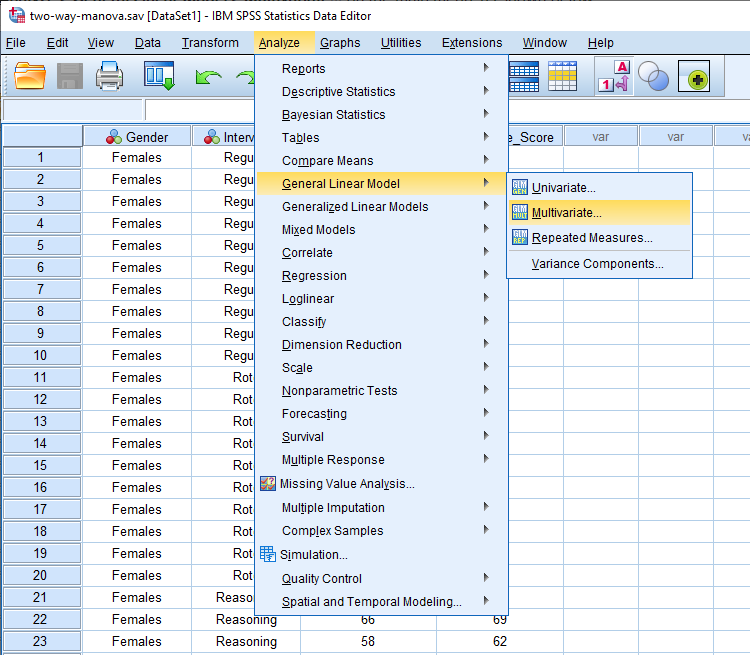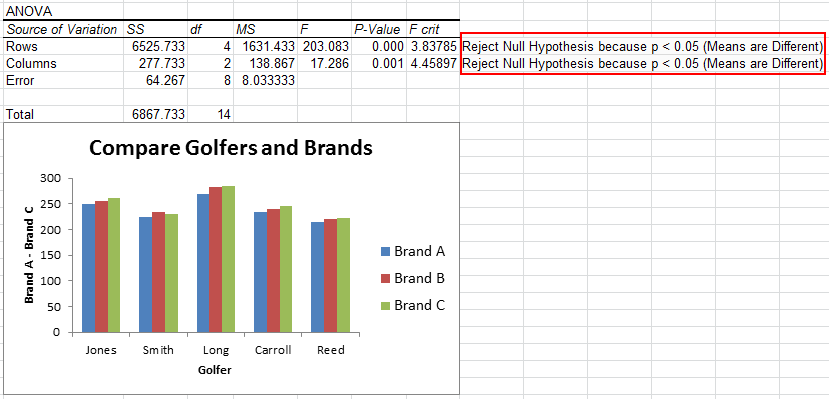

Whatever the technique of data collection, the observations within each sampled population are normally distributed.There are two assumptions upon which ANOVA rests: It’s important to remember that the main ANOVA research question is whether the sample means are from different populations. This means that it can’t tell you which specific groups were statistically significantly different from each other, only that at least two of the groups were. ANOVA is classified as an omnibus test statistic. Like other types of statistical tests, ANOVA compares the means of different groups and shows you if there are any statistical differences between the means. It does not tell you which one has a significantly higher or lower average mood score. However, you should note that ANOVA will only tell you that the average mood scores across all groups are the same or are not the same. When you understand how the groups within the independent variable differ (such as widowed or single, not married or divorced), you can begin to understand which of them has a connection to your dependent variable (mood). You’ll have 4 groups of data, one for each of the marital status categories, and for each one you’ll be looking at mood scores to see whether there’s a difference between the averages. To answer this one, you can use a one-way ANOVA, since you have a single independent variable (marital status).

Does marital status (single, married, divorced, widowed) affect mood? A two-way ANOVA can then simultaneously assess the effect on these variables on your dependent variable (spending) and determine whether they make a difference. You’ll need to collect data for different age groups (such as 0-20, 21-40, 41-70, 71+), different income brackets, and all relevant sexes. To answer this question, a factorial ANOVA can be used, since you have three independent variables and one dependent variable. You may want to use ANOVA to help you answer questions like this: Do age, sex, or income have an effect on how much someone spends in your store per month? If there is a statistically significant result, then it means that the two populations are unequal (or different). You would use ANOVA to help you understand how your different groups respond, with a null hypothesis for the test that the means of the different groups are equal. You might use Analysis of Variance (ANOVA) as a marketer when you want to test a particular hypothesis. You could also flip things around and see whether or not a single independent variable (such as temperature) affects multiple dependent variables (such as purchase rates of suncream, attendance at outdoor venues, and likelihood to hold a cook-out) and if so, which ones. The one-way ANOVA can help you know whether or not there are significant differences between the means of your independent variables.īecause when you understand how each independent variable’s mean is different from the others, you can begin to understand which of them has a connection to your dependent variable (such as landing page clicks) and begin to learn what is driving that behaviour. Two-way ANOVA does the same thing, but with more than one independent variable, while a factorial ANOVA extends the number of independent variables even further. If there is a lot of variance (spread of data away from the mean) within the data groups, then there is more chance that the mean of a sample selected from the data will be different due to chance.Īs well as looking at variance within the data groups, ANOVA takes into account sample size (the larger the sample, the less chance there will be of picking outliers for the sample by chance) and the differences between sample means (if the means of the samples are far apart, it’s more likely that the means of the whole group will be too).Īll these elements are combined into a F value, which can then be analysed to give a probability (p-value) of whether or not differences between your groups are statistically significant.Ī one-way ANOVA compares the effects of an independent variable (a factor that influences other things) on multiple dependent variables. It works by analysing the levels of variance within the groups through samples taken from each of them. Like the t-test, ANOVA helps you find out whether the differences between groups of data are statistically significant. Learn more about types of ANOVA How does ANOVA work? There are other variations that can be used in different situations, including: Put simply, ANOVA tells you if there are any statistical differences between the means of three or more independent groups. It’s a statistical test that was developed by Ronald Fisher in 1918 and has been in use ever since.


 0 kommentar(er)
0 kommentar(er)
